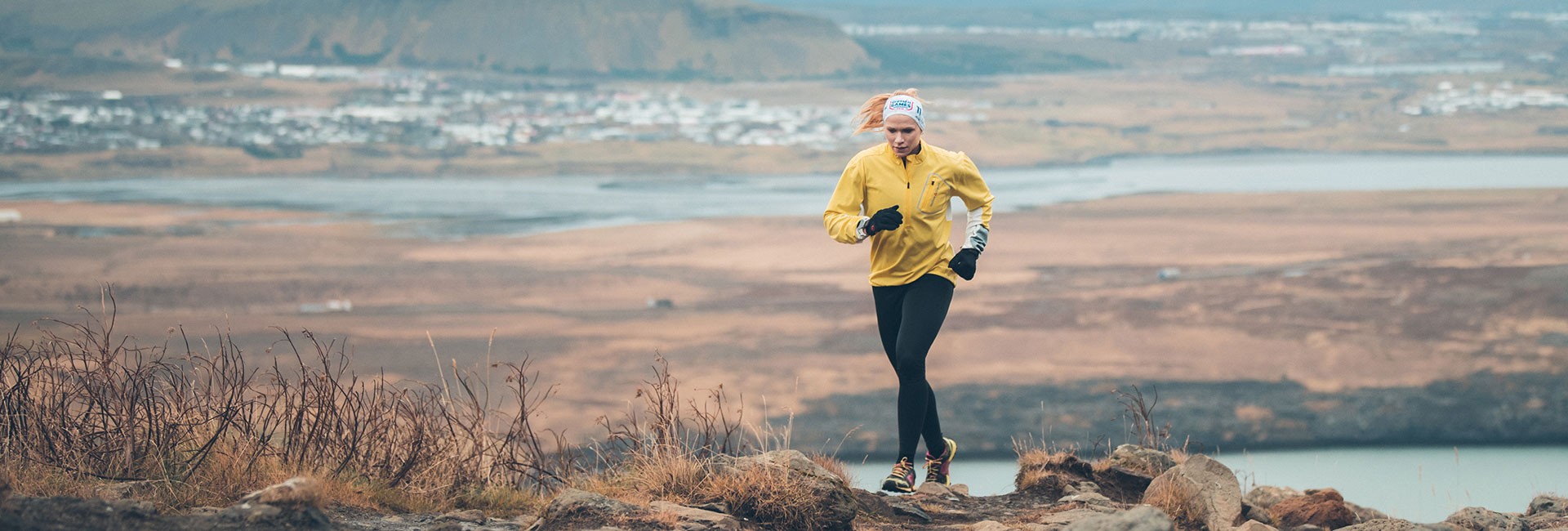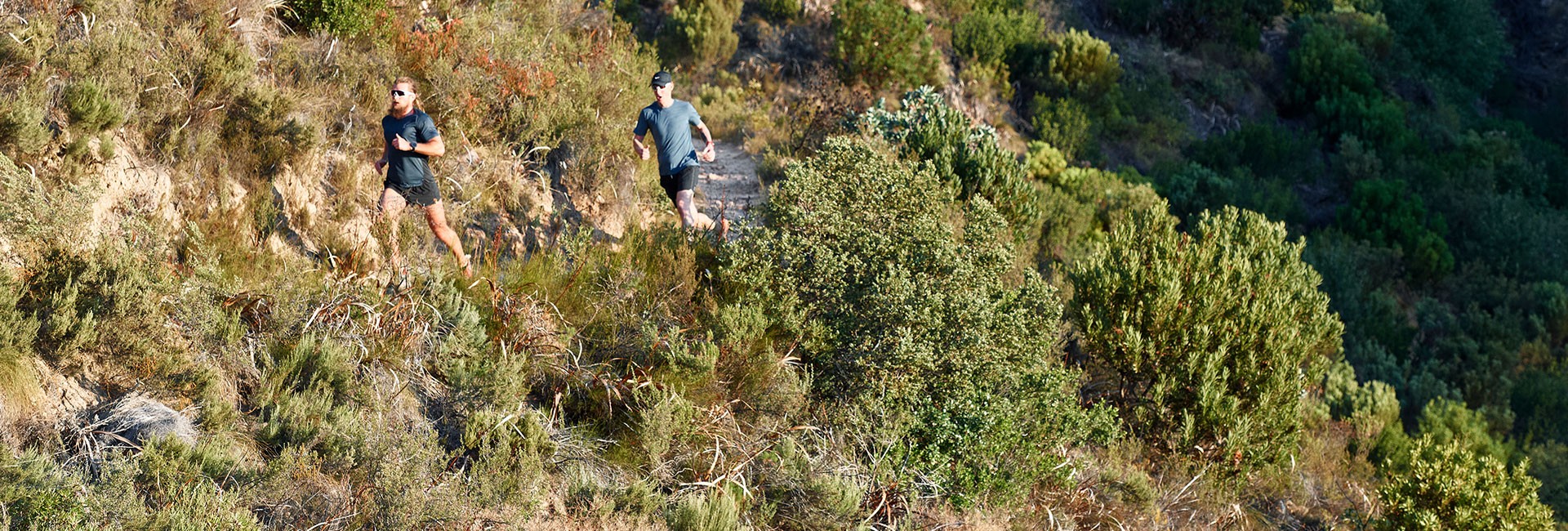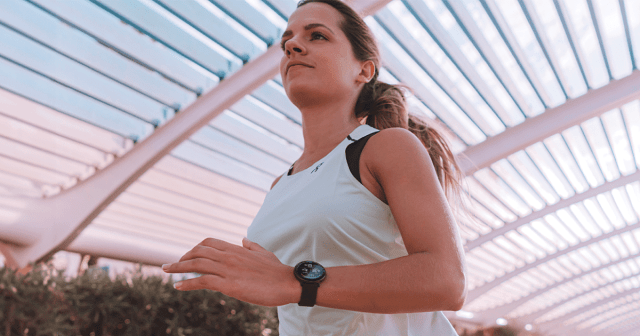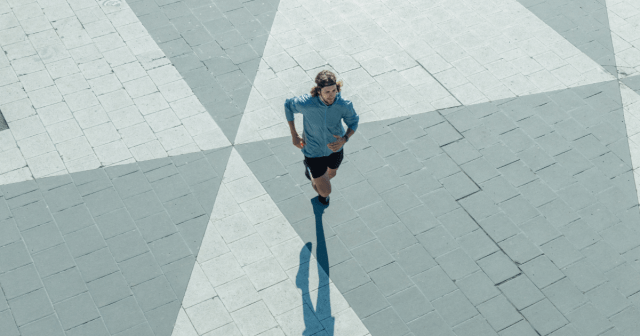No matter if it’s a fresh salmon fillet and a nice pinot noir, or a warm slice of apple pie and vanilla ice cream, some things just belong together. Not surprisingly, sports (specifically outdoor sports), are similar in this regard.
Even if hiking, for example, is your passion, supplementing your hikes with other outdoor activities can not only improve your strength and stamina but can also help keep you injury-free when you log miles on your favorite local trails.
To be clear, actually doing one of these outdoor sports will inherently make you better at said sport, and should be the central focus of your training plan. But, as mentioned, keeping things one-sided can, unfortunately, lead to potential problems.
Here we’ll unpack three of the most popular outdoor sports — hiking, trail running, and mountain biking. Let’s start by briefly discussing the benefits of each, potential problems if training is too one-sided and how each complements the other as a cross-training activity.
Let’s get down and dirty.
Trail Running
The benefits
Trail running has become more and more popular over the past few years — it’s a convenient way to take a break from indoor/city life and get some fresh air, all while exploring new areas and staying in shape.
Besides being a serious mental refresher, trail running has several physiological benefits. The mixed terrain helps develop an increased range of motion and develop more muscle groups than traditional running, running on sand and dirt reduces the impact on joints, muscles, and tendons (reduces soreness and injury), and with all the elevation gain, it’s the ultimate way to increase cardiovascular endurance.
The problems
Trail running, especially for athletes who haven’t built a solid foundation yet, is not without risks.
As you have to adjust to mixed terrain at a moment’s notice, there’s always a risk of ankle sprains and other comparable injuries due to a misstep and overextension of the joint (and consequential damage to tissue).
It’s also common for issues with overloading the patella tendon in the knee (from quad muscles that are too tight), or lower back pain from running on hills that are too steep.
Pair with
Trail running is an interesting sport because it requires both strength and endurance to be successful. Foam rolling and proper recovery methods including ice, compression, and elevating the legs are important for overall recovery, but active recovery is just as important.
Hiking requires similar movements as trail running, but puts far less stress on the system and helps strengthen muscle groups central to trail running. Mountain biking, on the other hand, allows you to incorporate speed work into your training regimen and gives you the opportunity to train on the same terrain with much less impact and strain.
If you’re looking for more strength-focused exercises, single-leg balance exercises on a BOSU ball will help strengthen accessory muscles in the feet, ankles, and knees (plus, you can throw in some one-legged jumps and lunges for a more well-rounded workout for trail running).
Hiking
The benefits
Similar to trail running for obvious reasons, hiking is one of the most accessible outdoor sports on the planet — with just a pair of hiking boots/shoes, hikers of all ages can hit the trails to their heart’s content.
As far as benefits go, hiking increases bone density, builds strength in the core, glutes, quads (and more), and helps improve balance — all while reducing stress and anxiety while out in nature. It’s also a highly social activity, with many hiking clubs offering weekly guided hikes in public areas.
The problems
When it comes to hiking, it’s all-too-easy to get complacent. Sure, you can hike further or tackle more elevation gain, but this outdoor activity doesn’t exactly check the ‘high intensity’ box unless you’re pushing yourself.
Additionally, like trail running, mixed terrain can increase the risk of strains and sprains, and the impact can be tough on the ankles, knees (hiker’s knee), and lower back (especially if you’re carrying a loaded pack).
Pair with
If you’re a new hiker, it’s important to pair your hikes with strength exercises for the first few weeks to help condition your muscles for the wear and tear of the trail. This includes step-ups, lunges and band walks, and be sure to slowly add weight to your pack while doing these exercises.
Cardio is especially important for hikers, and mountain biking fits the bill beautifully. This low-impact escape helps stress the heart and lungs and allows you to incorporate some intervals and speedwork into your training plan.
If you’re looking for less of a workout and something more recovery-focused, mellow, low-intensity rides are a perfect way to spin out the legs after strenuous hikes — ultimately reducing stiffness and soreness and promoting faster recovery.
Mountain Biking
The benefits
As with both hiking and trail running, it’s no surprise why mountain bikers are an approachable, happy bunch — simply being in nature can reduce stress and improve moods, and is great for mental health.
Mountain biking builds the glute, quads, and calf muscles, and due to the more physical nature of grinding up steep climbs and navigating difficult terrain, it requires more upper-body activation than road cycling. Mountain biking also increases coordination and balance, and it places less stress on the joints than other aerobic activities.
The problems
The act of pedaling a mountain bike is repetitive in nature, which can cause issues such as a decrease in joint mobility in the hips, as well as issues associated with tightness in the hamstrings, quads, and glutes.
Also, because mountain biking is one of the more low-impact outdoor sports, if done exclusively, it can lead to a decrease in bone density over time. If the geometry of the bike (including seat height, reach, cleat position, etc.) is off, this can cause both knee and lower back pain.
Pair with
A mountain biker’s power and efficiency stem from a strong core, so it’s important to mix in a few core-specific strength exercises into your training plan to boost strength and stability. Exercises like planks, side planks, bridges, single-leg crunches, etc. target the abdominals and lower back, while also help promote flexibility.
We know mentioning trail running to a mountain biker can be blasphemous, but it really is an efficient way to negate some of the issues caused by exclusively mountain biking.
Trail running once a week will help boost bone mineral density, help regain some mobility in the hips, and the side-to-side nature of dodging obstacles on the trail helps strengthen lateral muscles not used in mountain biking.
On the flip side, if you’re looking for something less strenuous, consider a shorter more active recovery-focused hike to stretch out the legs and increase circulation.
If you liked this post, don’t forget to share so that others can find it, too.
Or give it a thumbs up!
I like this article
Please note that the information provided in the Polar Blog articles cannot replace individual advice from health professionals. Please consult your physician before starting a new fitness program.





